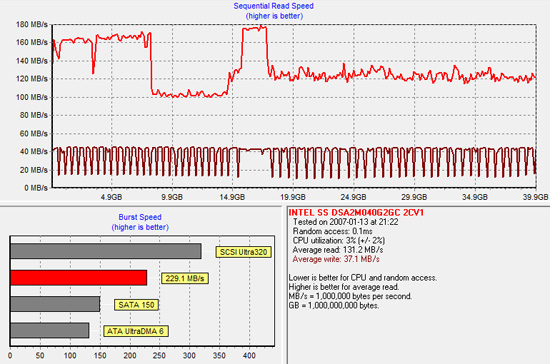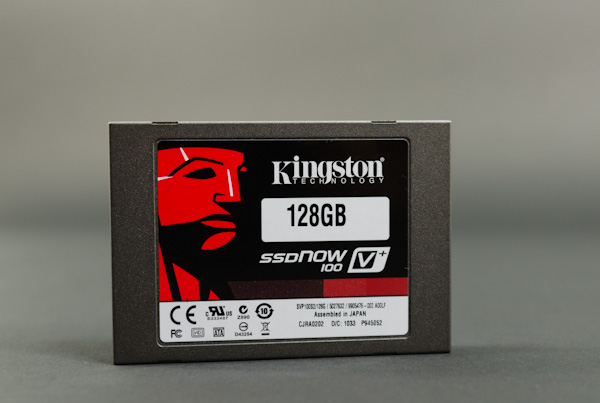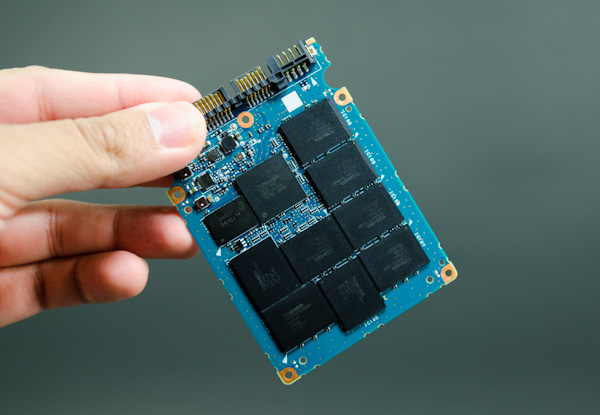Kingston SSDNow V+100 Review
by Anand Lal Shimpi on November 11, 2010 3:05 AM EST- Posted in
- Storage
- SSDs
- Kingston
- SSDNow V+100
I'm not sure what it is about SSD manufacturers and overly complicated product stacks. Kingston has no less than six different SSD brands in its lineup. The E Series, M Series, SSDNow V 100, SSDNow V+ 100, SSDNow V+ 100E and SSDNow V+ 180. The E and M series are just rebranded Intel drives, these use Intel's X25-E and X25-M G2 controllers respectively with Kingston logo on the enclosure. The SSDNow V 100 is an update to the SSDNow V Series drives, both of which use the JMicron JMF618 controller. Don't get this confused with the 30GB SSDNow V Series Boot Drive which actually uses a Toshiba T6UG1XBG controller, also used in the SSDNow V+. Confused yet? It gets better.
The standard V+ is gone and replaced by the new V+ 100, which is what we're here to take a look at today. This drive uses the T6UG1XBG controller but with updated firmware. The new firmware enables two things: very aggressive OS-independent garbage collection and higher overall performance. The former is very important as this is the same controller used in Apple's new MacBook Air. In fact, the performance of the Kingston V+100 drive mimics that of Apple's new SSDs:
| Apple vs. Kingston SSDNow V+100 Performance | ||||||
| Drive | Sequential Write | Sequential Read | Random Write | Random Read | ||
| Apple TS064C 64GB | 185.4 MB/s | 199.7 MB/s | 4.9 MB/s | 19.0 MB/s | ||
| Kingston SSDNow V+100 128GB | 193.1 MB/s | 227.0 MB/s | 4.9 MB/s | 19.7 MB/s | ||
Sequential speed is higher on the Kingston drive but that is likely due to the size difference. Random read/write speed are nearly identical. And there's one phrase in Kingston's press release that sums up why Apple chose this controller for its MacBook Air: "always-on garbage collection". Remember that NAND is written to at the page level (4KB), but erased at the block level (512 pages). Unless told otherwise, SSDs try to retain data as long as possible because to erase a block of NAND usually means erasing a bunch of valid as well as invalid data and then re-writing the valid data again to a new block. Garbage collection is the process by which a block of NAND is cleaned for future writes.

Diagram inspired by IBM Zurich Research Laboratory
If you're too lax with your garbage collection algorithm then write speed will eventually suffer. Each write will eventually have a large penalty associated with it, driving write latency up and throughput down. Too aggressive with garbage collection and drive lifespan suffers. NAND can only be written/erased a finite number of times, aggressively cleaning NAND before it's absolutely necessary will keep write performance high at the expense of wearing out NAND quicker.
Intel was the first to really show us what realtime garbage collection looked like. Here is a graph showing sequential write speed of Intel's X25-V:

The almost periodic square wave formed by the darker red line above shows a horribly fragmented X25-V attempting to clean itself up at every write. Eventually, with enough writes, the X25-V will return to peak performance. At every write request the X25-V controller will attempt to clean some blocks and return to peak performance. The garbage collection isn't seamless but it will eventually restore performance.
Now look at Kingston's SSDNow V+100, both before fragmentation and after:


There's hardly any difference. Actually the best way to see this in work is to look at power draw when firing random write requests all over the drive. The SSDNow V+100 has wild swings in power consumption during our random write test ranging from 1.25W to 3.40W. The swings would happen several times in a window of a couple of seconds. The V+100 is aggressively tries to reorganize writes and recycle bad blocks, more aggressively than we've seen from any other SSD.
The benefit of this is you get peak performance out of the drive regardless of how much you use it, which is perfect for an OS without TRIM support - ahem, OS X. Now you can see why Apple chose this controller.
There is a downside however: write amplification. For every 4KB we randomly write to a location on the drive, the actual amount of data written is much, much greater. It's the cost of constantly cleaning/reorganizing the drive for performance. While I haven't had any 50nm, 4xnm or 3xnm NAND physically wear out on me, the V+100 is the most likely to blow through those program/erase cycles. Keep in mind that at the 3xnm node you no longer have 10,000 cycles, but closer to 5,000 before your NAND dies. On nearly all drives we've tested this isn't an issue, but I would be concerned about the V+100. Concerned enough to recommend running it with 20% free space at all times (at least). The more free space you have, the better job the controller can do wear leveling.












96 Comments
View All Comments
pvdw - Monday, November 15, 2010 - link
"check the speed without compression and then compare drives "That makes no sense!
It's like saying disable branch predictions on one processor because another doesn't have it. Or disable the turbo on one car when comparing to a competing car that is naturally aspirated.
Out of Box Experience - Monday, November 15, 2010 - link
It makes all the sense because it would be a fair comparison of all the SSD's availableNot all drives have compression and not all data is compressible so why not test them all without compression?
Are you afraid that OCZ would be at the bottom of the list in a fair test like this?
Well, you may be right!
Lets test them to be sure
.harm - Thursday, November 11, 2010 - link
I'm not an expert on SSDs and RAID. So excuse me if my question is a bit stupid.I always understood that it´s impossible to use TRIM with a RAID configuration because the RAID controllers can't ´pass' the TRIM commands. So the SSD performance would drop overtime when using RAID. Now the SSD controller has "always-on garbage collection". Does this mean the performance in a RAID configuration doesn't drop?
AnnihilatorX - Thursday, November 11, 2010 - link
I would think so, it would at least be better off than other drive with less aggressive garbage collection.sparky76 - Thursday, November 11, 2010 - link
Will controllers like this leave OS X with a performance advantage over Windows 7, precisely because OS X has no support for the TRIM command?It seems that Win7 will have some system overhead in running TRIM while any OS without TRIM support will not suffer this, as garbage collection will be left to the firmware in the drive.
DoktorSleepless - Thursday, November 11, 2010 - link
I would love to see loading and minimum frame rate tests from actual games like what was done here a while back.http://www.anandtech.com/show/2614/14
It's just really hard to visualize real world performance even from Vantage.
I would bet a game like Fallout 3 would benefit a lot in the minimum frame rate department since it's always loading new data from the hard drive.
Nickel020 - Thursday, November 11, 2010 - link
I second this. While the IOPS for Bench are a nice measure, I don't know how to actually translate that into real world performance differences. I.e. are the differences in IOPS between say the new Kingston drive and Sandforce drives actually noticeable, and if yes, how noticeable?I would like to see a review that shows how much faster a Sandforce drive is than my old Vertex 1 and X25-M G2.
Chloiber - Thursday, November 11, 2010 - link
I'd also like to see that, as I said before.Just look at this test from (german) CB as an example:
http://translate.google.com/translate?js=n&pre...
Huge differences in synthetic tests, but a normal desktop system is just too slow to actually benefit from this!
I'm also missing these kinds of tests here. I think your earlier tests were better - now you just go through synthetic tests and show us the results, this isn't the thing I expected 1 or 2 years ago from an SSD test from anandtech.com. I'd like to see more tests which actually measure performance a user really gets when doing everyday tasks.
pavlindrom - Thursday, November 11, 2010 - link
Wouldn't it be better to have a drive-based sort function run to test how responsive the drive is? I would guess it would stress all of the corners of SSD performance. Write a bunch, shuffle in small portions when flipping values. Maybe it wouldn't test sequential erase. I still think it would show great info.Sufo - Thursday, November 11, 2010 - link
Just a quick recommendation. I have one of these, and i can confirm that with windows 7 (ie TRIM) and a 6gbps bridge the performance is pretty delicious. Grab one, if you meet these requirements.